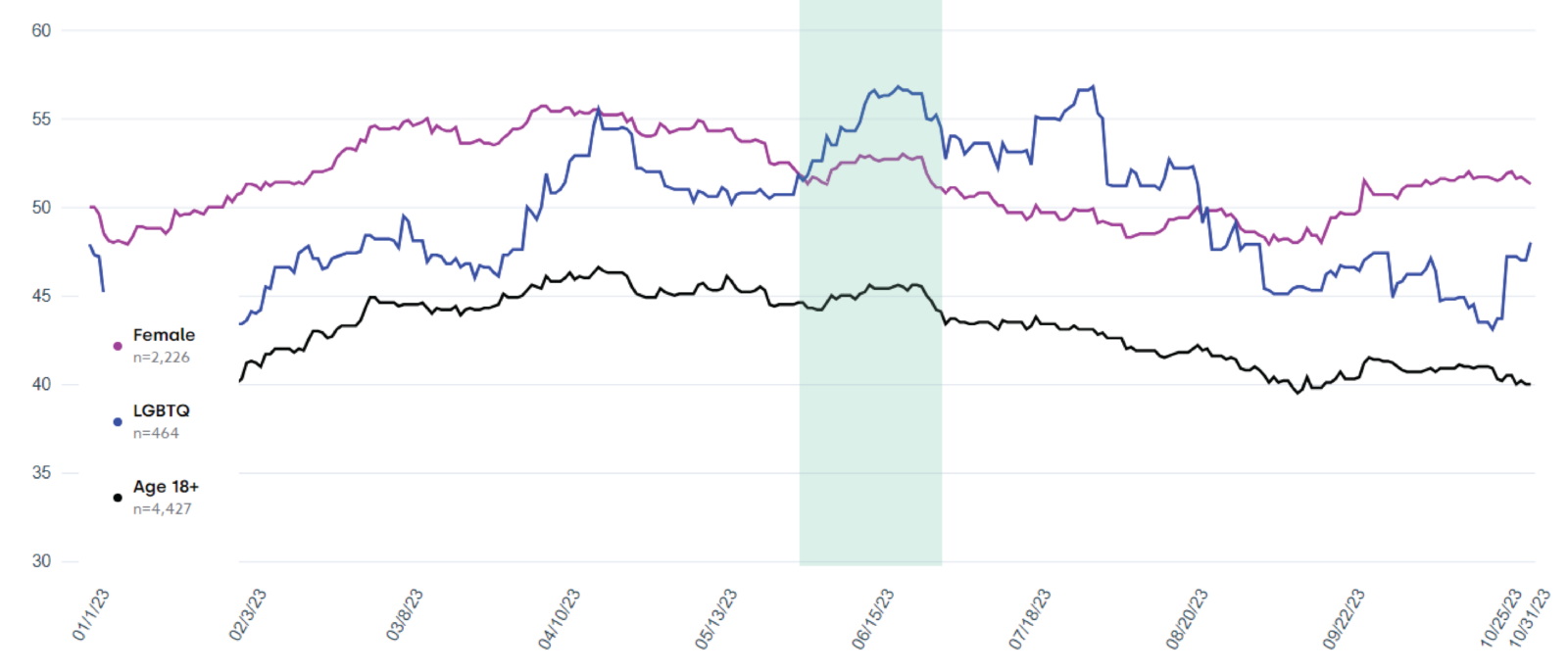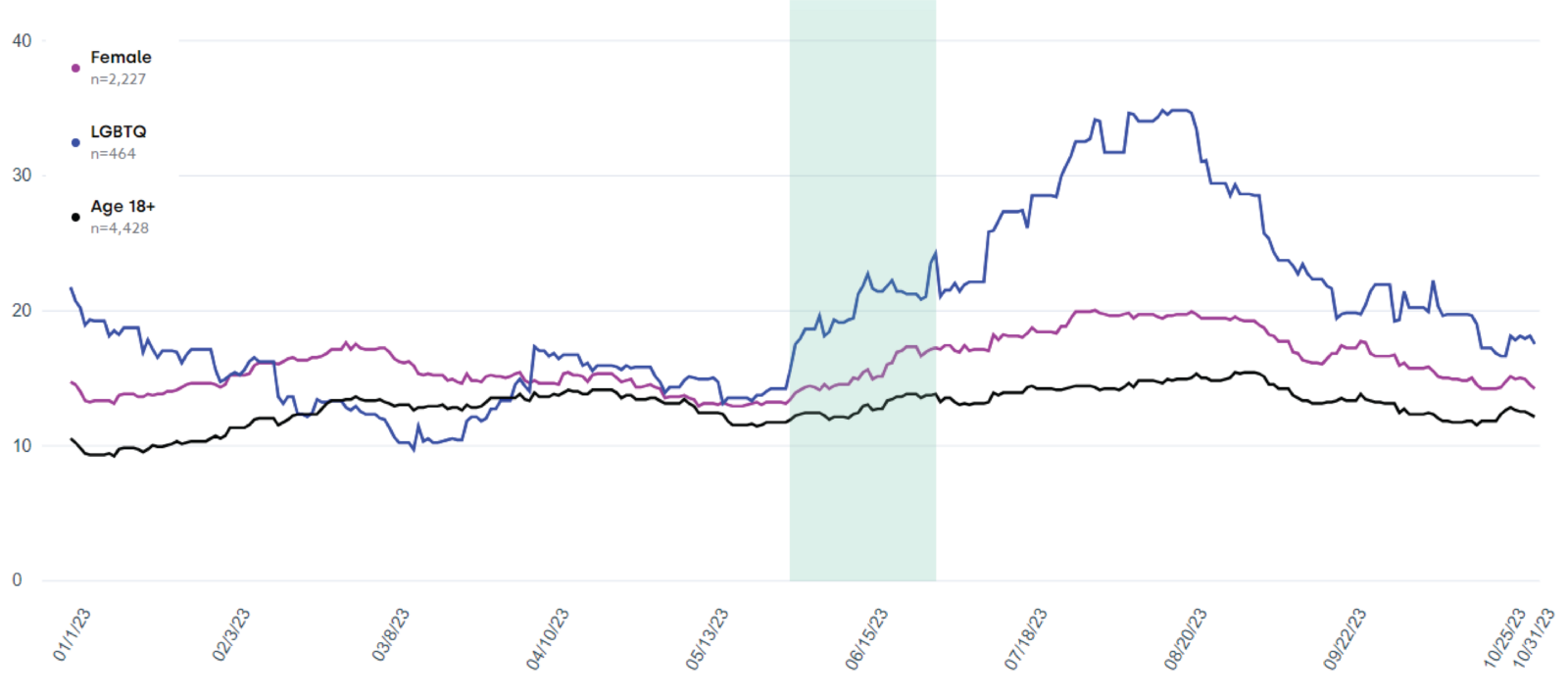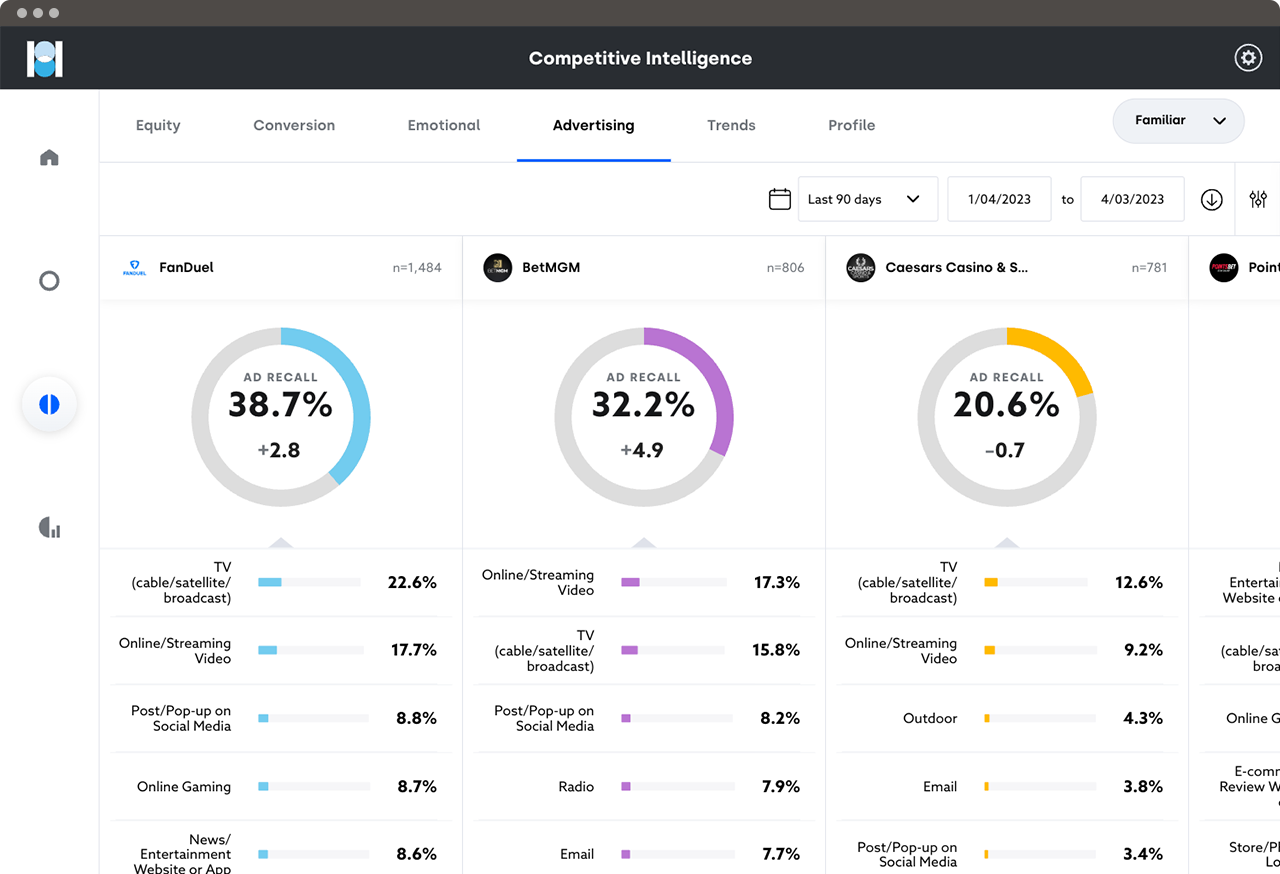Brief • 2 min Read

“We champion all beauty fearlessly and build inclusive environments for employees, consumers, and communities.” – Sephora
Consumers want more than empty platitudes; they demand that businesses back up their words with actions. This can especially ring true with the LGBTQ+ community and other minority groups who can feel overlooked and undersupported.
According to a recent Harris Poll report, nine in 10 LGBTQ+ individuals look into whether a brand’s actions align with their stated values. Similarly, 68% of LGBTQ+ individuals (90% of transgender individuals) agree that they take note of brands that say they stand for LGBTQ+ community, but then back down as soon as the opposition mounts.
Conversely, using QuestBrand data, we can see how positive brand perception builds when businesses stand firm with their stated values. Sephora has long been a vocal LGBTQ+ advocate, and the LGBTQ+ community appreciates their ongoing tangible support.
Want more information on retail trends? Check out our Retail & Ecommerce: An Industry Snapshot report for insights and brand rankings.
Action translates into brand equity gains
This June (Pride Month), Sephora participated in several cities’ Pride parades, including San Francisco and Washington, D.C. Throughout Pride Month, Sephora partnered with The Trevor Project, a nonprofit that raises money for suicide prevention and crisis support for LGBTQ youth. The beauty brand encouraged customers to use their Beauty Insider points to donate to the nonprofit.
Additionally, the retailer strongly promotes diversity in their workforce. As of 2023, they report that 14% of their employees identify as LGBTQ+.
In the chart below, we tracked Sephora’s brand equity across three groups: the general population of US adults, women, and LGBTQ+ individuals.
Brand equity measures the value consumers see in a brand at a particular moment of time. It is an average of four components: brand familiarity, perceived quality, purchase consideration, and perceived momentum.
Sephora’s Brand Equity January-October 2023 – 12 Week Moving Average

QuestBrand. 1/1/23-10/31/23. Base: General population of US adults (black), n=4,427. Base: US adults who self-identify as LGBTQ+, n=464. Base: Women, n=2,226.
Women are Sephora’s largest consumer group. Predictably, Sephora’s brand equity score is usually highest among female consumers. However, starting at the beginning of Pride Month (June), Sephora’s brand equity score was higher among LGBTQ+ respondents than female respondents.
The retailer’s brand equity score among LGBTQ+ respondents remained elevated for several months after Pride Month ended.
LGBTQ+ individuals see Sephora as “Dependable”
In addition to tracking brand equity, QuestBrand also captures the emotional attributes that consumers associate with each brand. Below, the graph tracks the percentage of consumers who describe the Sephora brand as “dependable” from the start of 2023 through the end of October.
Consumers Who Describe Sephora as “Dependable” January-October 2023 – 12 Week Moving Average

QuestBrand. 1/1/23-10/31/23. Base: General population of US adults (black), n=4,428. Base: US adults who self-identify as LGBTQ+, n=464. Base: Women, n=2,227.
From the start of 2023 through the end of May, similar percentages across all three consumer groups described Sephora as “dependable.”
However, from the start of Pride Month (and for several months following), members of the LGBTQ+ community significantly more often described Sephora as “dependable” than female consumers or the general population of US adults.
These numbers show how Sephora’s steady support of their LGBTQ+ employees, consumers, and the wider LGBTQ+ community has positively impacted this group’s perception of the Sephora brand. Other brands should take note that simply posting a rainbow flag each June may not be enough to win LGBTQ+ support. Instead, brands must genuinely champion the LGBTQ+ community if they hope to see positive brand equity gains.
Subscribe for more Insights
Subscribe to our newsletter for the latest trends in business, politics, culture, and more.

Related Content








